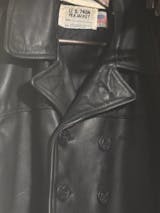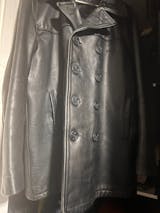If you are lucky enough to own a vintage or luxury vehicle with leather seats, no doubt you will take pride in its appearance, and want to maintain it in the best possible condition. Even a durable material such as leather can become damaged over years of use.
The good news is, leather can be repaired and restored to its original condition, in most cases. Here’s a guide on how to fix tears or holes in leather car seats.
Prepare the leather
Clean the area with a suitable product first, then use a leather prep to prepare the surface. The fine abrasive pad soaked in the prep solution will remove grime and grease, as well as coatings on the leather such as colours, waxes, and silicones, without damaging the grain of the leather. This will leave the surface clean and ready to absorb fresh coatings.
Use gentle pressure, and make sure the pad doesn’t become too dry. Next, if the hole or tear has untidy or protruding edges, carefully trim them with sharp scissors or a scalpel, ensuring that you don’t damage the surrounding area.
Apply a filler
For holes and tears or cracks, paste a filler, using a palette knife or spatula, into the hole. If the hole, tear, or scratch is not too deep, then a flexi filler will be most suitable. For deeper holes and tears, a heavy filler is recommended, particularly if it is an area of high wear, such as the base of the seat.
Work in thin layers and build up the paste gradually, rather than applying a large amount at once. This is to avoid problems with shrinkage once it dries out.
Smooth over each layer with the palette knife or spatula as you go, and make sure each layer is dry before you apply the next one. You can speed up the drying process with a hairdryer, if necessary. You may need several layers to fill a deep hole. Build up the level until it is just slightly below the intact leather surface.
Take care with the final layer
Once your base layers are fully dry, apply a final layer to bring the damaged area up to a seamless level with the rest of the seat. Remember that it may shrink when fully dry. If you apply a little too much filler and it is raised above the surrounding area, gently file it even with sandpaper.
Apply a colourant
Once the filler is dry, smooth and level, you are ready to apply a colourant. This will not only replenish the colour, but will add a protective coating to provide a scratch resistant hard-wearing surface. Using a colour matching chart to make sure you pick the right shade, unless you want to re-colour the whole seat.
Apply the colourant to the area with a sponge, rubbing it in well so that it is absorbed into the porous surface. Apply thin coats until you are happy that the area blends well into the rest of the seat.






